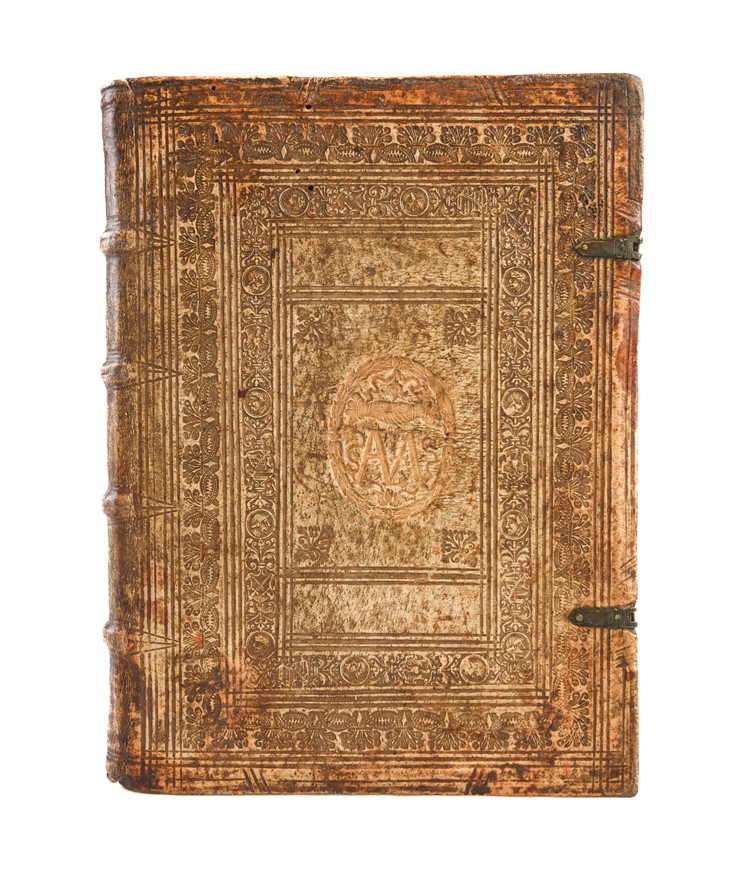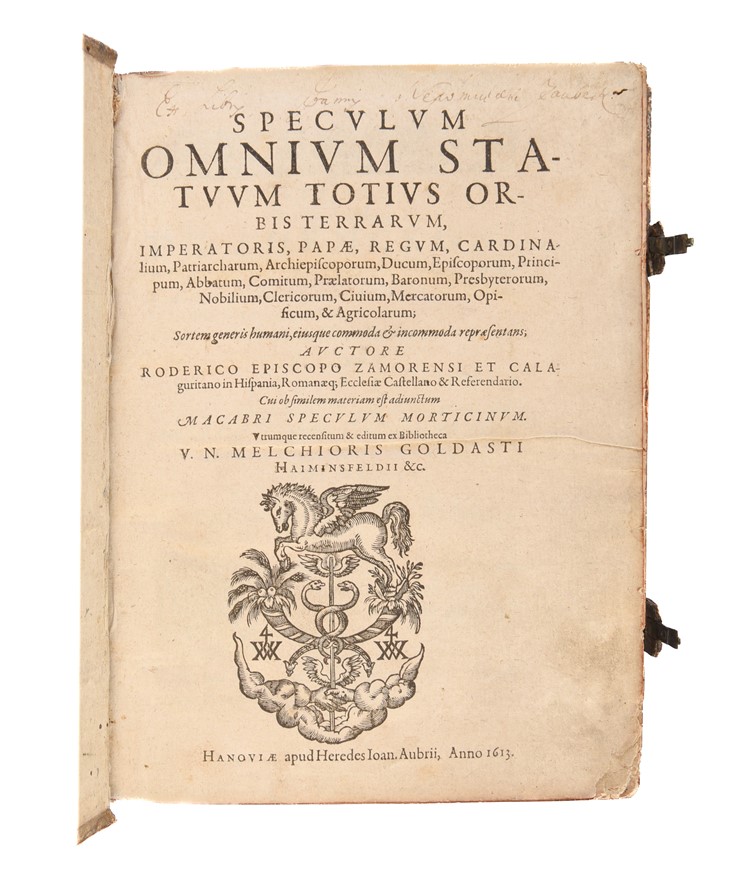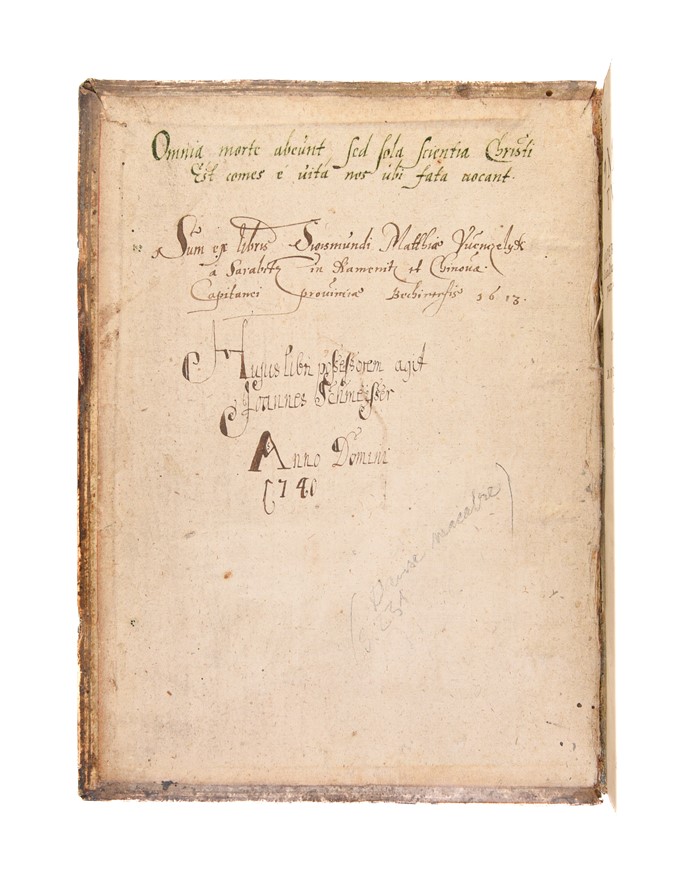Speculum omnium statuum totius orbis terrarum.
SANCHEZ DE AREVALO Rodrigo (1613)
£2250.00
Please contact us in advance if you would like to view this book at our Curzon Street shop.
FROM THE LIBRARY OF A BOHEMIAN REBEL AND HIS WIFE
Woodcut device of Andreas Wechel on title page and verso of final leaf.
4to (220 x 160mm). [20]ff, 277, (1)pp. Contemporary German blind tooled pigskin over bevelled wooden boards, covers panelled in blind, outer frame of roll-tooled ornament of interlacing foliage, inner frame with roll tool of alternating German arms and profile heads of soldiers and emperors with connecting motif of stylised foliage, inner panel with four floral cornerpieces and central, gilt-tooled stamp with monogram 'AMZ', possibly initials of 'Anna Magdalena' and 'Zikmund', with snakes and clasped hands, spine with four raised bands, clasps and catches intact (pigskin stained, corners rubbed and worn).
Hanau: Johann Aubry,
A handsome copy of an uncommon edition of the hugely popular Speculum Vitae Humanae, from the library of a Bohemian rebel and his wife.
First published in 1468, Spanish bishop and political theorist Rodrigo Sanchez de Arevalo’s (1404-1470) hugely popular Mirror of Human Life is a moralistic examination of different classes, stations and professions. It was intended to offer a guide to picking one’s vocation, as well as an instructive manual in the moral pitfalls to avoid in certain walks of life; it also offers an encyclopaedic account of various subjects, including astronomy, mathematics, music, agriculture, and so on. Present here with a separate half-title (though continuous pagination) is Petrus Desrey’s fifteenth-century translation of the dance of death in Latin verse.
Printed in Hanau, the present text was edited by Melchior Goldast von Haiminsfeld (1578-1635), swiss jurist, and prolific writer and editor. He dedicates the text to Zdenko Adalbert Poppel, First Prince of Lobkowicz (1568-1628), member of one of the oldest noble families in Bohemia and staunch Catholic supporter of Habsburg rule in the region. An inscription dated 1613 on the front pastedown indicates that the present copy was, within months of publication, part of the collection of a staunchly Protestant landowner in the same region, Sigismund Matthias Vencelik (Zikmund Matej Vencelík) and his wife, Anna Magdalena. From a family made Barons of the Holy Roman Empire by Frederick III, Zikmund was commissioner of the province of Bechyne in Southern Bohemia (the present-day Czech Republic), as he notes in his inscription here; his property was confiscated in 1622, however, for his participation in the Bohemian Revolt (1618-22) against the Habsburgs. The arms richly tooled in gilt on the upper and lower boards may very well be that of he and his wife, with the initials in the monogram 'AM' and 'Z' possibly representing 'Zikmund' and 'Anna Magdalena'; the clasped hands, or 'fede' motif at the top of the stamp, often represented the joining of hands through marriage.
Provenance: 1. Zikmund Matej Vencelík of Southern Bohemia (the Czech Republic) and his wife, Anna Magdalena: likely their monogrammed stamp 'AMZ' in gilt on upper and lower boards; Zikmund's inscription on front pastedown, dated 1613, along with 'omnia morte abeunt sed sola scientia Christi Est comes e[x] vita nos ubi fata vocant' inscribed above in green ink in his hand, roughly translating to 'all things pass in death, save the knowledge of Christ'. 2. Ownership inscription to head of title page, 'Joannis [?] Zaubeck'. 3. Joannes Schmeisser, florid ownership inscription in young hand dated 1740 on front pastedown.
OCLC: US: Saint Bonaventure, Stanford, UPenn, Florida. UK: Cambridge, Edinburgh, Oxford, Durham.
VD17 23:000212W..
Stock Code: 251090






